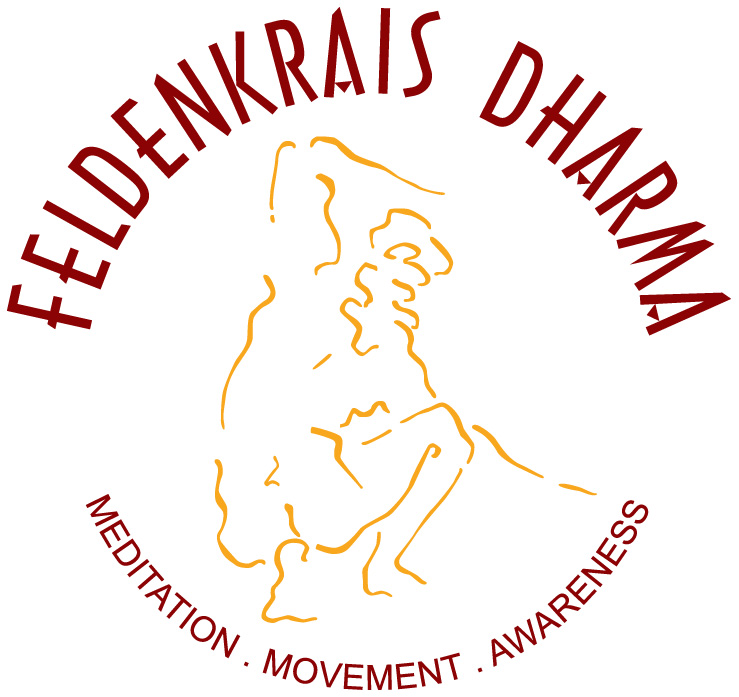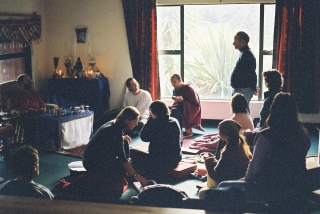by Jamie van Dam GCFP
While walking with a back pack or purse you may notice that from time to time your body is being held in one way or another. Perhaps your shoulders are being held upward or you are holding your head and neck forward even after you have put the backpack or purse down. If you do notice this, then there is a possibility to make a choice; to release the tension in your shoulders and neck – simply by noticing! But – as I can personally attest to – it is sometimes a few minutes or longer after that I finally notice and usually only after I have sensed some soreness and strain! So, why hold yourself in such a way that causes soreness or strain? Is it a habit, a pattern of the way you use yourself, or maybe a longstanding injury from a car accident?
Another question that arises is how to make a change if you are feeling like there is no choice for the way your body is. Perhaps making a change is more complex then just doing it – that maybe trying to do the same movement in different ways, to have fun while doing it and to increase the base of support, either in your feet when standing; your pelvis while sitting or your backside while lying down. Any or all of these positions will increase the likelihood of making a change. Would you like to try a small portion of a Feldenkrais lesson?
Please Note: The FELDENKRAIS METHOD® is an educational system. It is not a substitute for medical diagnosis or treatment. Consult your physician before trying the following movement. If you have pain or difficulty with the movement, please stop and consult your physician.
Please come and stand. Slide your right hand down your right leg as far as you can comfortably and come back to where you began. Do this movement a few times, each time finding a way to make this movement with less effort. Notice the distance in which you slide your hand comfortably – is it to the middle of your thigh or your knee? What do you do with your head in this movement? Try moving your head in a different way while sliding your hand. Does changing the way you involve your head in the movement make it easier or more difficult? After doing this exploration a few times, come back to just standing and pause for a moment. What do you notice when just standing? Is there a difference between the right and left side in how your feet, pelvis, ribs or shoulders feel? Has the quality of your experience in some way changed?
Please slide your left hand down your left leg as far as you can ease-fully and come back to where you began. Do this movement a few times. And as before, intend to do this movement more easily each time. Pause after this movement and stand. What differences in standing do you notice now?
Come and lie down on your back. Close your eyes and bring your attention to your shoulders and back. Paying special attention to where they contact the floor and where they do not contact the floor – in other words notice the shape of your shoulders and back.
Roll onto your right side, bend your legs and have your left knee on top of your right. Most importantly is that you start off from a place of comfort. Is your head comfortable while lying on your right side? if not, please get a pillow or cushion to support your head and neck to prevent strain. As well, if needed please place a blanket or something soft between your legs. But don’t become too attached to these cushions, as the lesson progresses you may notice a shift in your body, and the size and shape of cushion may have to be changed to something smaller or larger– remember to simply notice and make changes accordingly.
Place your arms in a comfortable place with your left hand on the floor in front of your chest. Move your left shoulder up, as if you were shrugging your left shoulder. Do this movement a few times and notice the range of motion, notice your breath, pay attention to your whole self while doing this movement. After a few times hold your left shoulder upward (shrugged) and take in a few long deep breaths and then release your shoulder, try this particular pattern a few times and then please roll onto your back and rest. While resting on your backside, notice the contact your shoulders and back make with the floor, has this contact changed from before?
Roll onto your left side and do with your left shoulder the same as you did with your right shoulder in the mirror image. After you have completed please roll onto your backside and rest, notice how you rest in your shoulders and back now – what has changed?
Slowly and gently come up to standing and notice how you stand. Has anything changed in your experience of yourself since you began this lesson? Try to slide one hand at a time down your legs and notice what it is like to do that now. Walk around and notice whatever comes to your attention, being open and receptive to any experience at this time.
Did you experience a lessening of strain or tension in your body and mind? Sometimes it is this easy to release tension and strain, just bring your attention to yourself in movement, make a few funny Feldenkrais movements and the stiffness will go away. Regardless of how it is explained, awareness of yourself can lead to less stress and strain in your body and mind.
Notes:
- What do I mean by “more easily”? I am suggesting that you try to not hold your breath, jaw, eyes or hands while doing the movement – if you are doing any of those actions. Move in varying speeds, from very slow to a regular speed to quickly but not hurriedly. Do the movement in three or more fun and creatively different ways.
I would love to hear from you, write to me through my contact page.
Jamie van Dam practices Feldenkrais on Galiano Island and Victoria. Jamie is teaching Feldenkrais Awareness through Movement® classes at the South End Community Hall Thursdays March 4, 11, 18 and 25 from 7:30 pm to 8:30 pm and Fridays March 5, 12, 19 and 26 from 9:30 am to 10:30 am, 2010

